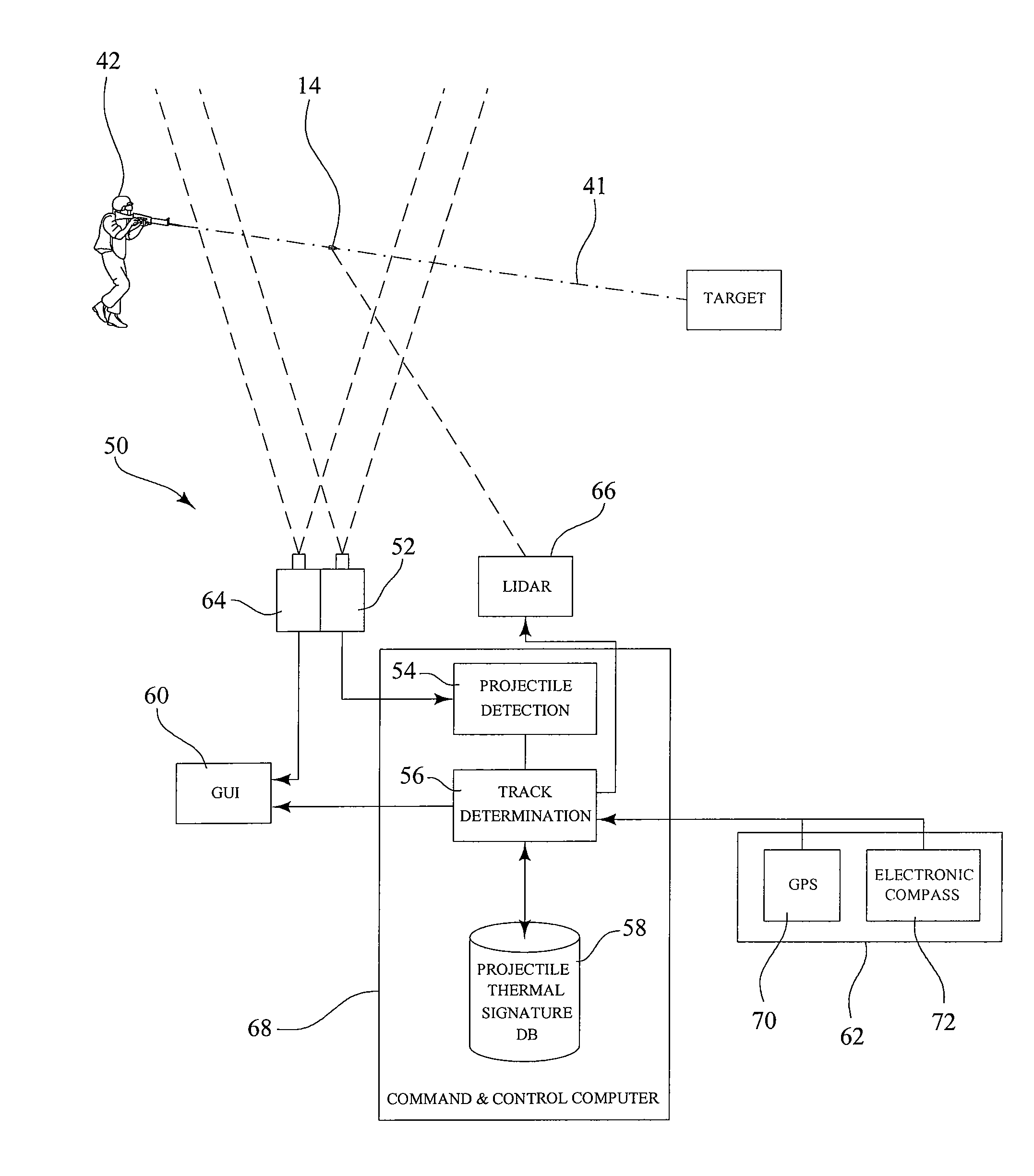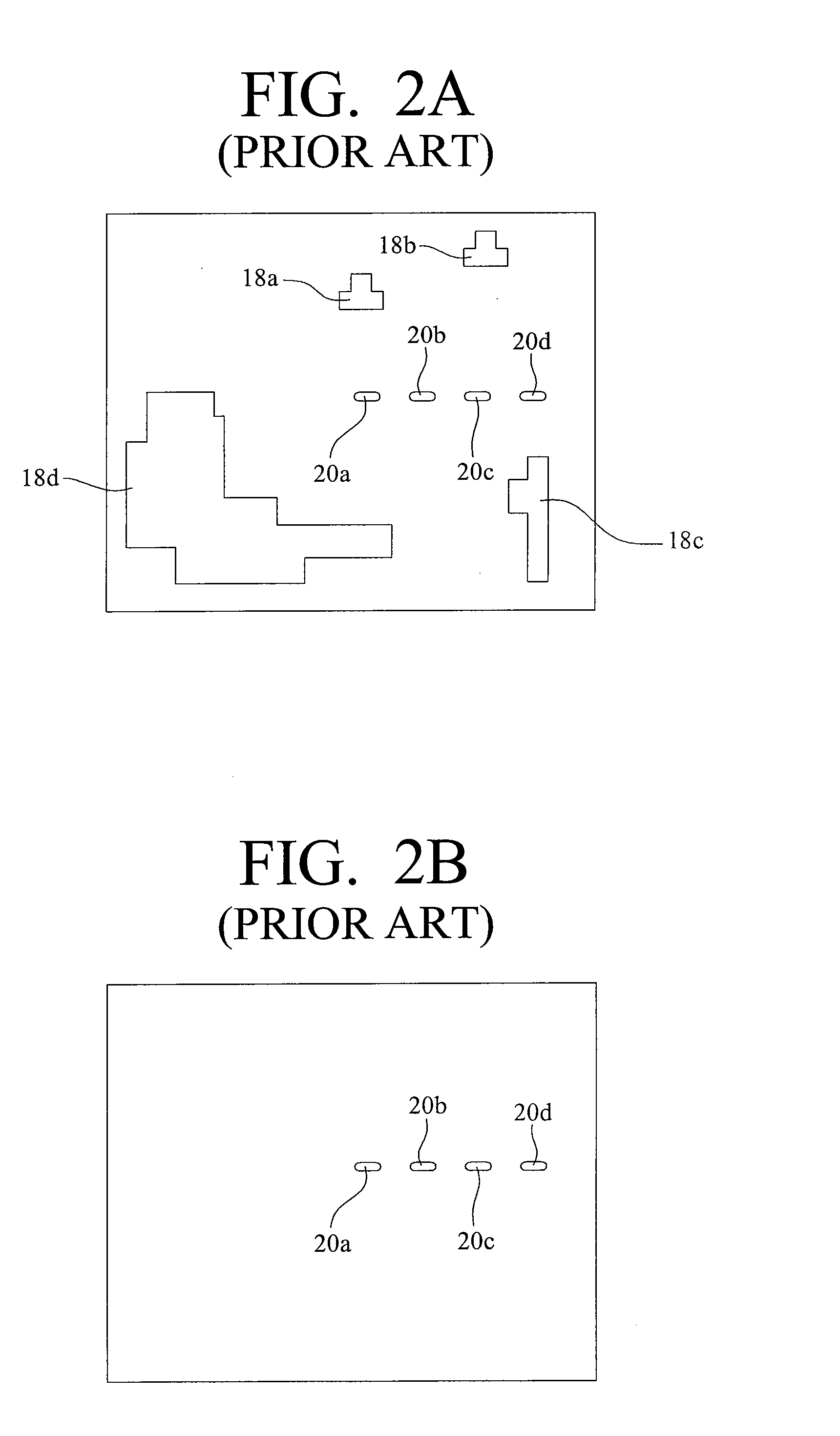Projectile tracking system
a projectile tracking and projectile technology, applied in direction controllers, instruments, using reradiation, etc., can solve the problems of insufficient technology for detecting subsonic projectiles, inability to locate snipers, and inability to use existing counter-sniper targeting systems that use this technology in many cases to locate snipers. , to achieve the effect of efficient and effective processing of the processing componen
- Summary
- Abstract
- Description
- Claims
- Application Information
AI Technical Summary
Benefits of technology
Problems solved by technology
Method used
Image
Examples
Embodiment Construction
A. Every Projectile has a Unique “Thermal Signature”
[0045]FIG. 4 is a plan view of a plane defined by the location of an infrared sensor 40 and a projectile track, path, or trajectory 41. FIG. 4 shows how the composite thermal image of projectile spots over several image frames may appear with respect to the infrared sensor 40 at a given position (d1, d2) with respect to the location 42 from which the projectile is fired, where d1 is the shortest distance from the sensor 40 to the projectile path, and d2 is the distance along the projectile path from the firing location 42 to the closest point to the sensor 40.
[0046]FIG. 5 shows that, assuming that a projectile's path is a straight line, any projectile path, as well as the relative locations of the infrared sensor 40 and the location 42a, 42b, 42c from which the projectile is fired can be characterized by d1, d2, since in geometry, a line and a point define a plane.
[0047] Returning to FIG. 4, it is shown that the projectile spots ...
PUM
 Login to View More
Login to View More Abstract
Description
Claims
Application Information
 Login to View More
Login to View More - R&D
- Intellectual Property
- Life Sciences
- Materials
- Tech Scout
- Unparalleled Data Quality
- Higher Quality Content
- 60% Fewer Hallucinations
Browse by: Latest US Patents, China's latest patents, Technical Efficacy Thesaurus, Application Domain, Technology Topic, Popular Technical Reports.
© 2025 PatSnap. All rights reserved.Legal|Privacy policy|Modern Slavery Act Transparency Statement|Sitemap|About US| Contact US: help@patsnap.com



